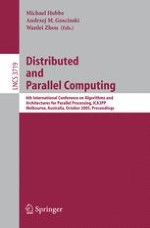There are many applications that require parallel and distributed processing to allow complicated engineering, business and research problems to be solved in a reasonable time. Parallel and distributed processing is able to improve company profit, lower costs of design, production, and deployment of new technologies, and create better business environments. The major lesson learned by car and aircraft engineers, drug manufacturers, genome researchers and other specialist is that a computer system is a very powerful tool that is able to help them solving even more complicated problems. That has led computing specialists to new computer system architecture and exploiting parallel computers, clusters of clusters, and distributed systems in the form of grids. There are also institutions that do not have so complicated problems but would like to improve profit, lower costs of design and production by using parallel and distributed processing on clusters. In general to achieve these goals, parallel and distributed processing must become the computing mainstream. This implies a need for new architectures of parallel and distributed systems, new system management facilities, and new application algorithms. This also implies a need for better understanding of grids and clusters, and in particular their operating systems, scheduling algorithms, load balancing, heterogeneity, transparency, application deployment, which is of the most critical importance for their development and taking them by industry and business.
